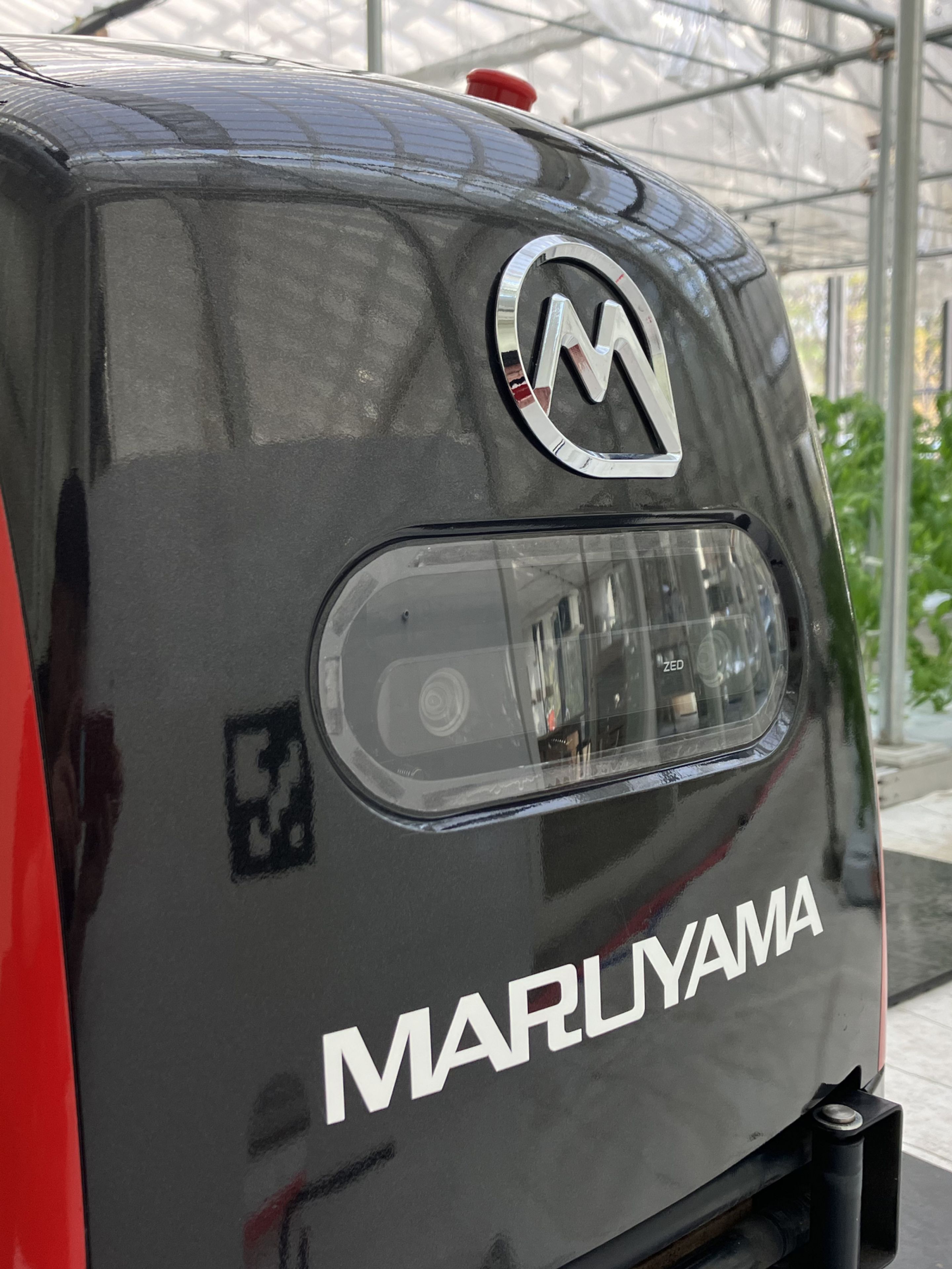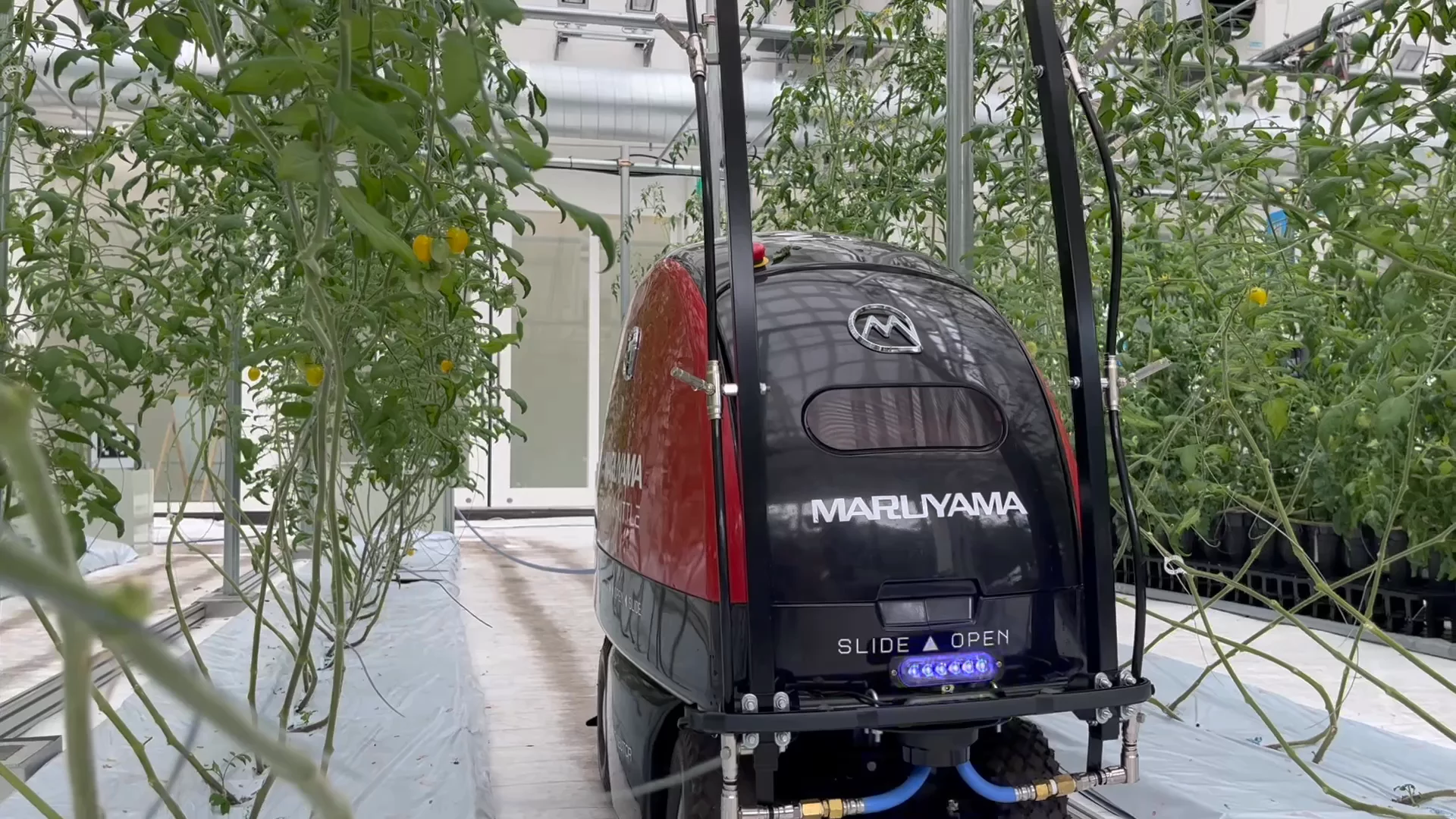Maruyama deploys Stereolabs 3D vision to enable robust, autonomous spraying in complex environments.

In the agriculture sector, few tasks are as repetitive and critical — yet uncomfortable — as greenhouse spraying. From exposure to chemicals to high humidity and heat, the job is physically demanding and time-consuming.
That’s exactly the kind of challenge Maruyama wanted to solve.
A leading Japanese manufacturer of agricultural machinery, Maruyama set out to automate the pesticide spraying process using a custom-built robot. But one key obstacle stood in the way: how to localize and navigate inside a greenhouse, where GPS signals don’t reach and traditional sensors fail in harsh, changing conditions.

Maruyama x Stereolabs
Greenhouses present a unique set of constraints for autonomous systems. Lighting conditions vary throughout the day. Rows of plants grow and shift over time. The mist from the spray itself can interfere with sensors.
Alternative solutions — like RTK-GNSS or 2D LiDAR — proved unreliable. GNSS struggled to provide stable positioning indoors, and 2D LiDAR had trouble distinguishing mist from actual plants, especially under direct sunlight.
Maruyama needed a perception system capable of delivering accurate localization and real-time obstacle awareness — all while staying cost-effective, even in complex environments.
“Vision-based perception turned out to be the key. With the regular SDK update, it allowed us to significantly improve the navigation reliability and stay within budget, unlike the alternatives we tested.” -Huan Quang Luong, Robotics Solution, Engineering Department at Maruyama MFG Co Inc
The prototype developed by Maruyama was equipped with a Stereolabs ZED 2i stereo camera and an NVIDIA Jetson Xavier NX for real-time perception and computing. The system leverages stereovision and onboard AI to enable global localization in repetitive greenhouse environments.
Despite using only a rear-mounted camera, this vision-based solution provides reliable navigation capabilities tailored to Maruyama’s mechanical design constraints
The setup included a ZED2i 2.1mm camera mounted on the rear side of a mobile robot base equipped with a sprayer system, bumpers, and auxiliary sensors. Using C++ SDK, all features are freely integrated into Maruyama's existing architecture–with no hardware customization required.
“The IP67 rating and easy integration of the ZED camera made it a seamless fit. It just worked in our physical environment. Moreover, with the release of the ZED X with secure GMSL2 connection, Stereolabs brought us to the next step of exploring new potential solutions.” - Huan Quang Luong, Robotics Solution, Engineering Department at Maruyama MFG Co Inc

The impact was immediate and concrete.
In a typical greenhouse covering 1.8 acres, with 30 plant rows of 45 meters each, spraying tasks took roughly 3 hours per session. With the autonomous robot, that workload was reduced by 75%, freeing up farmers’ time for other critical tasks like monitoring and crop care.
But beyond time savings, the robot brought a significant health benefit. Spraying pesticides in high-humidity greenhouses forces farmers — many of whom are elderly in Japan — to wear sealed suits, leading to heat stress and discomfort.
Now, with the robot doing the work, they no longer need to stay inside the greenhouse or be exposed to the spraying zone.
The actual robot can be seen in the Tech-Lab, KUBOTA AGRI FRONT (Kitahiroshima city, Hokkaido), an agricultural learning facility dedicated to the appeal and potential of food and agriculture crop cultivation.
“We’re helping people avoid contact with hazardous environments. It’s a real step forward for comfort and safety — especially for elderly farmers.”- Ogawa Yasuhiro, Business Development Department at Maruyama MFG Co Inc
What started as a single application is now opening new doors. Because the Stereolabs system provides high-resolution images and 3D data of the greenhouse, farmers can use it to monitor plant growth and environmental conditions — without even stepping inside.
Maruyama is already exploring how to apply the same robot and vision stack to logistics inside its own factory, such as moving goods or parts between stations.
“By working with Stereolabs, we were able to focus on solving the core greenhouse challenges. Their system gave us the tools we needed — and the support to go further.” Sano Hayato, Engineering Department, Designing Section at Maruyama MFG Co Inc
